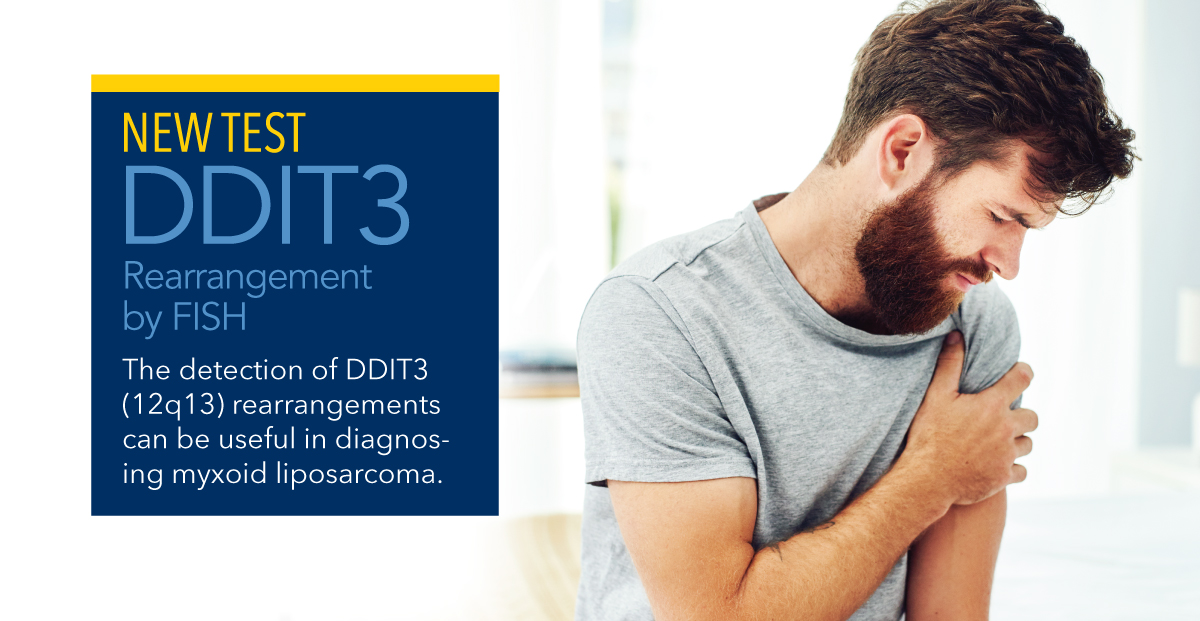MLabs now offers DDIT3 (12q13) Rearrangement by FISH
The detection of DDIT3 rearrangements can be useful in diagnosing myxoid liposarcoma – including uncommon histologic variants – and in distinguishing this sarcoma from other mesenchymal tumors that may be considered in the differential diagnosis.

Myxoid liposarcoma is a type of Liposarcoma that is considered a rare form of cancer growing within cells that store fat. Commonly found in arms and legs, this tumor grows slowly spreading to other areas of the body.
DDIT3 (formerly CHOP) encodes a transcription factor involved in adipogenesis and erythropoiesis. Rearrangements involving this gene are characteristic of myxoid liposarcoma. Morphologically, myxoid liposarcomas demonstrates uniform, small spindled cells within a myxoid stroma with distinctive arborizing capillaries. A subset of myxoid liposarsomas show progression to round cell morphology, associated with a poorer prognosis. Approximately 95% of myxoid liposarcomas bear a t(12;16)(q13;p11) rearrangement that results in the fusion of the N-terminal transactivation domain of FUS and the full length of DDIT3. In the remaining cases, there is a similar rearrangement involving DDIT3 and EWSR1.
| METHODOLOGY Fluorescence In Situ Hybridization (FISH) |
COLLECTION INSTRUCTIONS A formalin-fixed, paraffin-embedded tissue block (containing sufficient neoplastic cells) is preferred. Unstained slides (3 slides cut at 4-microns) with associated H&E-stained slide are also acceptable. Decalcified tissue or tissues with other fixatives will be accepted and the assay attempted; however, these specimens may result in failed testing due to degraded nucleic acid. Both blocks and slides should be stored at room temperature. |
ANALYTIC TIME 3-10 days, Testing Days: M – T |
THREE WAYS TO ORDER
| VISIT HANDBOOK | CALL CLIENT SERVICES Call us at 800.862.7284 |
DOWNLOAD REQUISITION |


